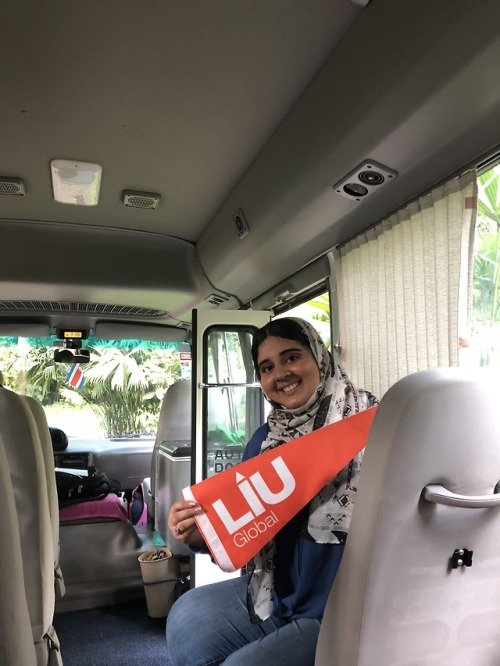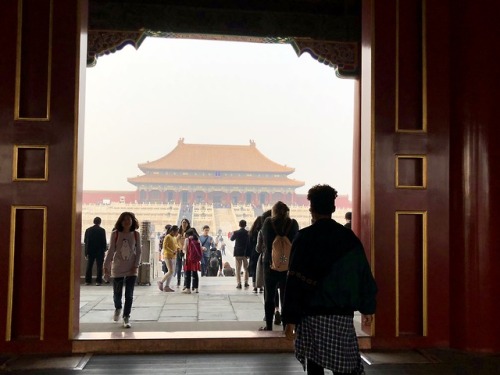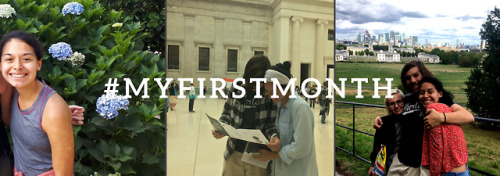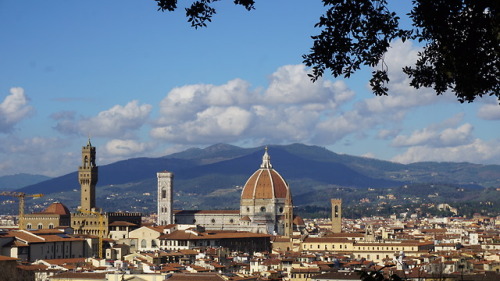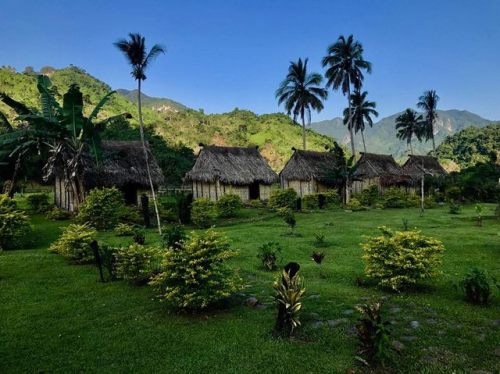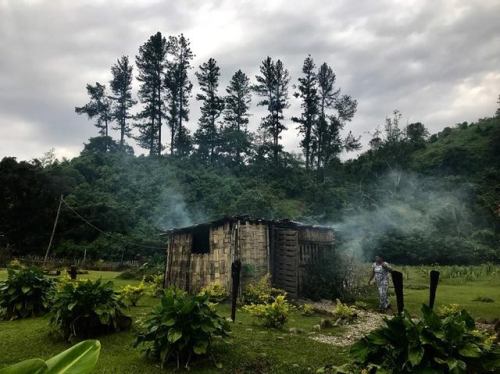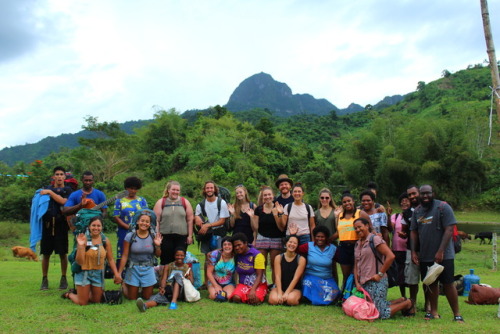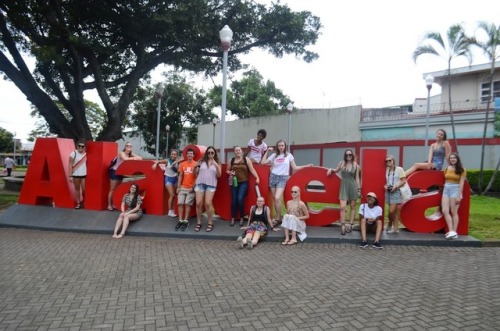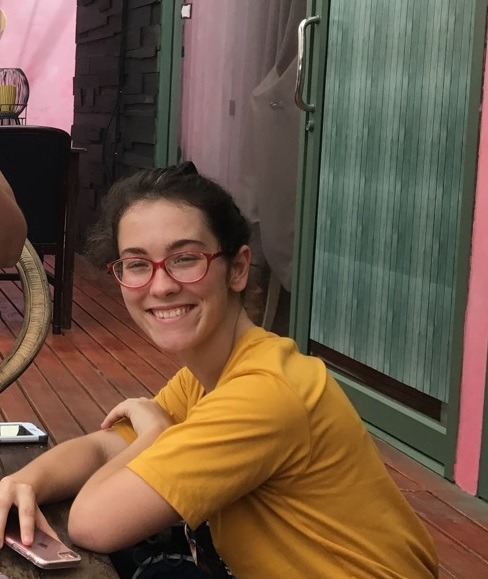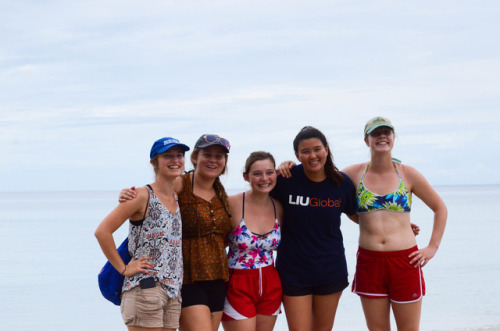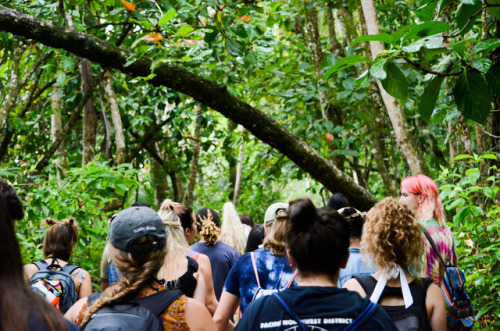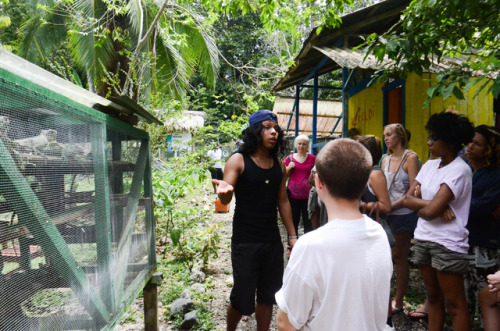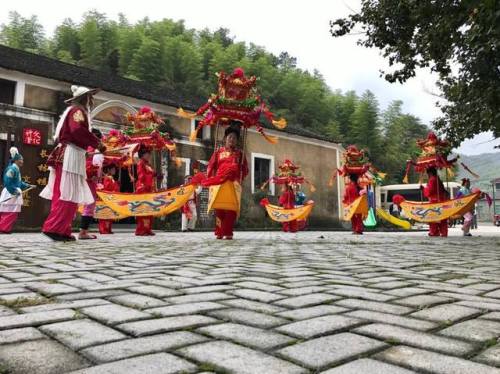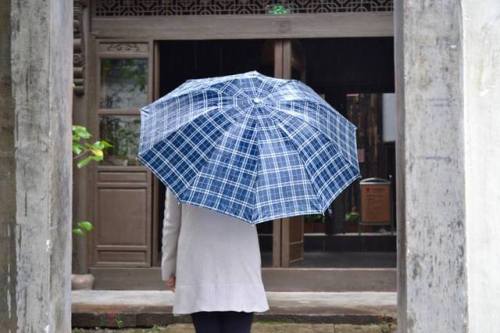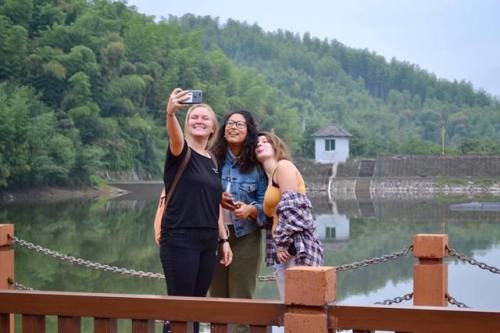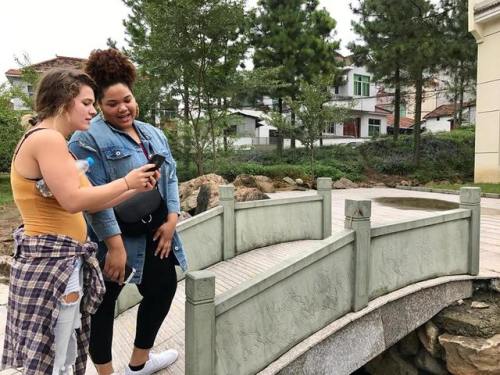#liu global
My Life As A Pakistani-American Muslim
By: Rina Sarfraz
I’m an 18-year-old female student traveling the world. I happen to be part of a great program calledLIU Globalwhere I get to participate in experiential learning while traveling to various countries. But I’m also a Muslim, Pakistani-American, and hijab-wearing female traveling the world. My experience so far has been positive, but it’s not similar to travel blogs posted by white females. My privilege is not equal to a white female or man’s privilege due to the color of my skin and my religious faith. I have been treated very differently in my life compared to my white peers. I have met many people throughout my traveling journey so far that have been very confused as to how I could be from New York. And then starts the story of how I explain where my family and I are originally from.

I was born in Pakistan. My parents and I immigrated to the USA when I was 2 years old. We settled in Long Island, New York. I grew up in a predominantly white neighborhood and was fortunate enough to be accepted by most people, even though my family and I faced some racism. After 9/11, my parents struggled to maintain their Muslim faith publicly. My mother was told by people, both Pakistanis and non-Pakistanis, to not observe her faith and to keep a low profile. My mother said she felt very insecure and vulnerable, especially during the time period immediately following 9/11. The USA was not portrayed as the “land of the free” anymore to my parents. The racism that followed my family was intense. And unfortunately, we were not the only Muslims experiencing the negative treatment. There were many stories going around the Muslim community of Muslims being attacked, hijabs forcibly being torn off, and more. One story that hits close to home is when my father was almost shot at his job. Two men yelled racial slurs at him while pointing a gun at him. Luckily, no shots were fired and my father was fine. But this just shows how rapidly and dangerously Islamophobia has spread. My father should not be answering for Islamophobia with his life, let alone any Muslim individual.

I decided to start wearing the hijab my freshman year of high school. The hijab is a personal choice decided by Muslim women if they would like to wear it. Some Muslim women decide to wear the hijab as a means to fulfill the commitment of modesty, show personal devotion to God, and visibly express their Muslim identity. Once I started wearing the hijab, I experienced both acceptance and rejection. I had some individuals love the idea of how I was expressing myself while others clearly expressed their distaste. Instead of fighting fire with fire, I decided to educate people during high school. I organized my high school’s first Middle Eastern/South Asian Cultural Night twice. I decided to do this event because I saw the importance of acceptance and mutual understanding. I wanted to bridge the divide between different groups of people/ideas. Attendees enjoyed a variety of activities, including coloring mandalas, receiving henna tattoos and eating traditional foods from the Middle Eastern/South Asian regions. I was able to merge people from different upbringings into a night of love, unity, and acceptance. At this event, I revealed my life story to a roomful of friends and strangers, hoping they could relate to my experiences shaped by my culture and religion, yet fearing they’d reject every word I said. But I was not rejected because the event was a success. Many people came both times and it was covered by the local media. Many of the attendees learned a lot and I was glad that I used an opportunity to expand their knowledge.
My family and I came to the USA to obtain the “American Dream”. From the stereotypes to the hate crimes, these realities make Muslim Americans often feel the “American Dream” is simply that: a make-believe, unattainable dream. But we work hard to achieve our potential. Yes, we are immigrants. We are “minorities.” But, we are also part of America’s greatest, brightest future yet. To quote General Jay Silveria of the United States Air Force Academy, “The power of us as a diverse group, the power that we come from all walks of life, from all parts of this country, from all races, all backgrounds, gender, all makeup, all upbringing, the power of that diversity comes together and makes us that much more powerful. That’s a much better idea than small thinking and horrible ideas”. As General Jay Silveria states, leadership does not discriminate. It does not care if you are young or old or rich or poor or man or woman or black or white or brown or yellow or green or pink or any other color that exists. It does not take into account what language you speak or which God you worship. It asks only that you lead. That you lead, be it in an action or in a speech, to enrich the lives of those who follow. So that’s exactly what I continue to do. I stand up for myself and others. I stand up for humanity and the fight against injustice. We need to reject the hatred and confront with love. We need to be leaders in this movement of empowering the rights of all instead of sitting back and watching lives be degraded. It is our utmost responsibility as humans to lead with love and respect. And while I continue to stand up for myself and others, I have always been and will continue to be proud of my identity.
During my time at LIU Global so far, I have experienced curiosity and happiness from my peers, my host family, and other locals. My host mom and local Ticos were curious to know about my religious and cultural background. I gladly told them and was happy to engage in a conversation with them. It’s been interesting living in Costa Rica for the past three months while experiencing traveling in various perspectives. I learned about the small Muslim population in Costa Rica and learned about what religion means to some Ticos. It is important to learn from one another, and that is what LIU Global has allowed me to do.
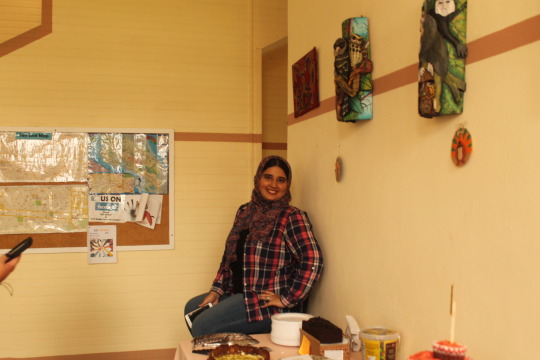
Unfortunately and unjustly, Islam and Muslims are deemed by most of the world population to be the root causes of terrorism all across the world, along with Sikhs and Hindus, who are mistakenly being identified as Muslim due to their appearance. There is no doubt that this is far from accurate. However, a considerable majority of the world’s population still blames Muslims and other minorities for many reasons. This is completely unacceptable. The best way to reject this claim of discrimination is to educate ourselves and others. As an open minded individual and LIU Global student, I have learned to embrace differences and bond with acceptance. Through my experience traveling and living as a global citizen, I’ve witnessed the beauty of kindness and helpfulness towards others. It is our utmost responsibility as humans to lead with love, and that is what I plan to do throughout my time here in this world.
Post link
Beijing
by Aaleah Oliver
I had imagined all cities in China to look like the Dongcheng district of Beijing - a mix of traditional Chinese architecture- pagodas and tiled roofing with modern skyscrapers and high- tech facets. But there was more to the area than I had initially realized. The main road ran through a hutong, or a maze-like community with narrow unnamed streets. Though the word hutong can be traced back to 13th C. China as referring solely to the narrow streets between single family courtyard houses, they have come to refer to busy cramped neighborhoods characterized by multi-family homes, and shared public restrooms as a result of rapid urbanization and increased housing demand. In recent years, many Beijing hutongs have been demolished over public health and safety concerns as they are often stigmatized as dangerous and dirty places. Some sections of hutongs have been preserved as part of larger China-wide efforts at cultural preservation in cities although this active preservation finds itself in the midst of a larger debate over what, how, why and for whom certain aspects of Chinese culture should be preserved.

The pavement picked up outside of the barricade disallowing cars and bikes to enter the residential section of the hutong. There, the pedestrian and e-bike only street began, it quickly widened with shops selling elegant qipaos and silk scarves next to shops selling cheap slippers and endless options for food stores on either side eventually making way to the main road, just two blocks from King’s Joy hotel where The LIU Global China Center Students spent our week in Beijing. Every morning, the lobby of King’s Joy would swell with people, from all over of all ages. Many of them, like us, would join the rush hour foot traffic making our ways to the nearby metro station, Forbidden City and Tian’anmen Square.
Tian’anmen Square is a historic gathering place facing the gate to the Forbidden city. It was where thousands of students from all over China gathered to demand freedoms of speech and government accountability in 1989. The students were met with violence, jailed, and many were killed in clashes with police and military forces. The action at Tiananmen in 1989, often called the June 4th uprising, marked a shift in that youth generation who didn’t have a memory of the Cultural Revolution or Mao Zedong. June 4th was a perspective-altering event that disillusioned Chinese youth with their government and the reforms they sought. To enter the Tian’anmen Square area, we walked under a metal detector and put our belongings through a bag scanner. On the Square, plain-clothed police officers walked in between tourists taking photos and group tours. A large flower bouquet sculpture adorned the middle of the square in celebration of China’s National day.
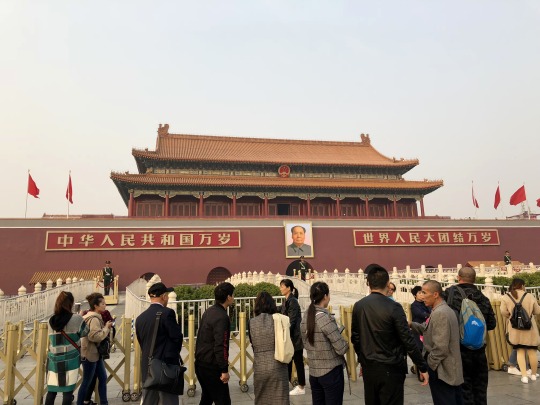
We visited the Square on a clear day and were gifted with sunlight for three whole consecutive days during the trip. But it was during our journey up the Great Wall that the smog made a vengeful comeback. During exercise, you breathe in four times the amount of air that you breathe during normal activities. That meant we’d breathe in four times the amount of smog during our hike up the wall than we had been during our site visits and lectures. Osman, our health and safety guy for the semester passed out 3M medical grade air filtration masks to the six of us students, Lyric our student coordinator and Vivian our program director on the bus ride to the wall. The masks fit snugly over our noses and mouths. They also made it difficult to breathe. By the time we reached the ticket collector, most of us had taken them off.
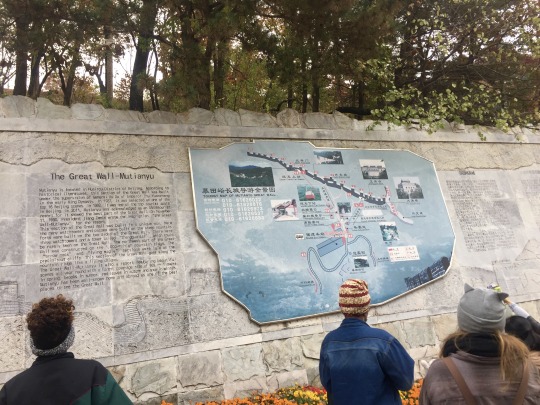
The smog in Beijing has developed as a public health and safety concern over the past few decades in China. With over 300,000 deaths related to bad air quality occurring each year. Though in more recent years, Beijing has been experiencing more clear sky days as a result of stricter environmental protection policies. In partial preparation for the Beijing trip, our Global Studies III:Theories, Issues and Solutions class watched “Under the Dome,” a documentary on smog in Beijing. One moment that stood out to me in the film, was investigative journalist Chai Jing interviews a child who had never seen a blue sky in her lifetime, and who, at the rapid rate of industrialization by any means necessary in China in 2016, might have never known a reality outside of that.
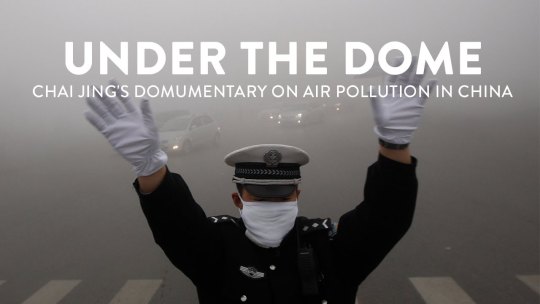
Our visit to Beijing ended in the office of the UNDP, where we spoke with the Program Manager of the Energy and Environment team and his two expert colleagues for Sustainable Development Goals (SDG) localization and youth empowerment and learned about the UNDP’s mandate in China and what the nation is currently doing to eliminate harmful emissions. During the UNDP visit, we learned about hydrogen powered vehicles that produce zero harmful emissions, China’s pilot development program that focuses on sustainably developing the economies of three cities with hopes that the program will be expanded to cities all over China, and the engagement of Chinese youth in environmentally conscious social enterprises. The tone our visit to the UNDP ( United Nations Development Programme in China ) office was overly positive with our speakers generally hopeful of the future of China, despite the time it has taken the country to get there.
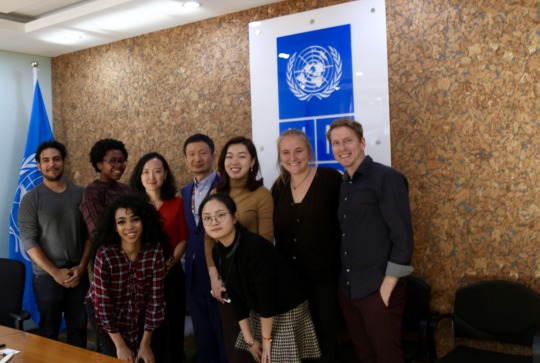
I noticed that absent from the development plans was any initiative directed toward culture, migrant workers or women. I attributed this by and large to path-dependency or the idea that tries to explain the continued use of a model based on historical preference. Historically, women have been left out of national development discussions, as have migrant workers and minority ethnic communities. Contemporarily, organizations are trying to change that.

We met Yiping Cai, an Executive Board Member of Development Alternatives with Women for a New Era (DAWN) in a Beijing cafe on Tuesday afternoon, our third day in Beijing. (DAWN) is a network of feminist scholars and activists who research and document the impact of current trends of development on women in their home countries, participate in discussions and advocate for “ethical and socially responsive development alternatives”. Over coffee, we discussed major issues affecting women in China, one of them being the “leftover woman” campaign – a state-sponsored campaign aimed at shaming women into marrying earlier, often at the expense of their educational and professional careers as well as their economic and political freedoms.
A lot of efforts of DAWN and the Feminist movement in China is focused on creating spaces for rural and urban women in their governments and societies and empowering them to participate. Yiping Cai introduced to us briefly, the power cube framework, a visual representation of the interrelationships of power dynamics on local, national and global levels.
I found it interesting how forms of power aren’t presented as neutral and are inherently stacked against minority and marginalized peoples. That observation reminds me to survey the power that I have in certain spaces and to make sure that my words or actions do not contribute to the silencing of groups of people or the perpetuation of harmful ideologies.
I ended the Beijing trip holding on to the belief that for communities, nations, and for people, actions can be self-reinforcing, so a step in the right direction, with the right amount of encouragement and accountability, will one day lead to lasting positive change.
Post link
Tourism and Politics in Barcelona
by Melissa Vargas
The LIU Global Europe center visited the city of Barcelona, located in Spain’s autonomous region of Catalonia, for four days last month. Academic focuses of the trip included the study of Modernism and Surrealism, the politics of Catalan separatism, and the impact of tourism. An emphasis was placed on understanding the relationship between art, culture, and politics rather than viewing them as separate entities.
Political situation
The streets of Barcelona breathe political air. Everywhere you look, there are flags and political banners. Whether it be the Cataluñan independence flag or the Spanish flag, these flags serve as symbols of a deep-seated identity conflicts.
Personally, I found the topics of politics and tourism most interesting.
Politics

Catalonia has been considered an autonomous region by the Spanish national government since 1979. There are sixteen other autonomous regions in Spain, however, each region’s agreement with the national government and level of autonomy varies. Spain has granted Cataluña the right to self-governance and recognizes Catalan as an official language of the region in addition to Spanish. While Catalonia has been considered autonomous for almost forty years, a desire for greater autonomy and even succession has persisted throughout the region’s history.
At the mention of Catalonia, the first thing that might come to mind is the referendum that took place just over a year ago on whether or not the region should become independent from Spain. Although the Spanish state refused to acknowledge the legitimacy of the referendum, grassroots efforts still managed to make the vote happen. The referendum was met by the central government with violent and punitive responses, most notably raids on polling stations and both the incarceration and exile of Catalan government officials. While Catalonia’s turbulent political climate during the referendum caught international media attention, the coverage was ephemeral. Visiting Catalonia and learning about its history made clear that the region’s political unrest wasn’t born when global coverage of the referendum began, nor did it dissipate when the referendum ceased making global headlines.
The city of Barcelona breathes a political air, as distinct political flags and banners stuck out on nearly every street that I walked on. Some banners have messages advocating for the release of political prisoners by the Spanish government, while others simply have the word ‘sí’ printed on them in reference to the referendum vote. The different flags hung throughout the city give insight into the nuanced opinions that exist on the issue of separatism. The official flag of Catalonia is yellow with four red stripes. The popularly recognized Catalonia independence flag, which resembles the official flag but incorporates a white star within a blue triangle, was most prevalent throughout the city. Another flag, with the base of the official flag and a red star within a yellow triangle, also represents independence but has communist and socialist ties. I also saw Spain’s national flag hung as an expression of anti-separatism from time to time. Just walking the streets of Barcelona put into perspective the distinctions that exist even within parties generally in agreeance.
Tourism

Prior to the trip, our class discussed the negative impact of tourism within the city of Barcelona in our Bibliographic Research course. We particularly focused on the comparison of tourists to immigrants, in terms of their contributions to the city. Residents of Barcelona appreciate immigrants over tourists because they contribute to society in a lasting, impactful way. Imagining the specific ways that tourists might negatively impact a city, such as pollution and gentrification, was near effortless. However, one statistic from the Guardian mentioned during our discussion was inconceivable: Barcelona recorded 32 million tourists in 2018, which is 20 times the population of the city’s residents. For this class, we were tasked with being acutely aware of the impacts of tourism on the city throughout our visit and taking field notes on our observations.
There is a large immigrant population in Barcelona and it quickly became clear why the city prefers their presence over the presence of tourists. Over the span of our four day trip, I encountered and spoke with a Colombian woman who works in a shoe store, a Pakistani restaurant owner, and a woman running an art exhibit from Madagascar. The immigrants I encountered are all individuals who are in Barcelona to stay, whereas tourists are not.
The once unfathomable number of 32 million tourists truly came alive upon arriving in Barcelona. Streets, public transport, and famous landmarks are heavily congested with tourists. In our Global Studies course, we’ve been learning about the concept of space and how to analyze it. What better place to analyze space than Barcelona? I found the Barrio Gótico quarter, a heavily commercialized area located in the center of the city, a particularly interesting space to analyze. Contrary to its name, Barrio Gótico is not authentically gothic; the quarter’s medieval buildings were restored in a gothic style during the late 19th and early 20th centuries in order to appeal to tourists.
As I walked through the quarter knowing its history, I couldn’t help but feel like I was walking through an artificially constructed space. Endless modern shops and restaurants, nestled along cobblestone alleyways and next to large gothic buildings, seemed rather incongruous. The quarter consists of many tall buildings with balconies overlooking the narrow streets below. From these balconies hang independence flags and political banners. While independence flags were hung from a minority of the balconies, the symbolism of these flags exudes a very political climate into a space largely occupied by tourists. It was interesting to see small, spatially elevated expressions of residentiality and local identity juxtaposed with the predominantly tourist-filled space below. It’s difficult to imagine, as a local, looking down onto a space every day that tourists dominate.
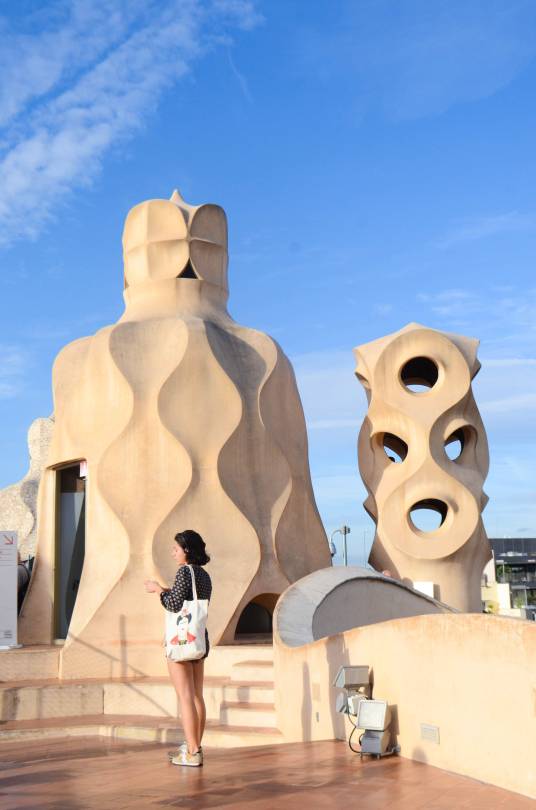
While there isn’t a simple solution to the issue of tourism in Barcelona, witnessing how tourists can negatively impact a society causes me to question my role as a traveler and think more deeply about the way I may be affecting a city when I visit it.
Post link
My First Month in Spain withLIU Global
By Melissa Vargas
I have been living in Alcalá de Henares, Spain for about a month now. While we are housed in dorms at the Lope de Vega residency and attend classes at the University of Alcalá Franklin Institute, our campus is in no way defined to these two locations; the city of Alcalá de Henares serves as our campus. There is always something going on in this city, whether it be medieval festivals, farmers markets, art exhibits, or religious processions. Brimming with culture and history, the city provides so many awesome opportunities for immersion and learning and my goal this semester is to take full advantage of it.
As with most experiences living abroad, moving to Spain has involved a bit of culture shock and adjustment. The biggest adjustment for me has been the transition from living with a host family in Costa Rica last year to living in a dorm with 400 other international students. While the newly built residency’s facilities are incredible and living in a dorm allows for much more independence, having a host family gave me so much unique insight into the local culture in a very intimate way.
Because the residency provides all of our meals and has pristine quality study areas and recreational facilities, it’s easy to fall in the habit of spending more time in the dorm than in the city itself. Living in a residency doesn’t eliminate immersion opportunities, but rather just requires a bit more of a proactive effort to engage with local people. I’ve been trying to spend more time in the city by doing small things such as doing homework in a local cafe, eating ice cream in the park, or going for a run to get a better sense of all that lies outside of the residency.
Some other things that I’m still getting accustomed to are the type of Spanish spoken here and meal times. Castilian Spanish varies from the Latin American Spanish that I am used to, particularly the use of vosotros and the pronunciation of c and z as a th sound. As for meals, Spaniards eat much later in the day– the residency begins serving dinner at 8pm on weekdays and 9pm on the weekends. I sometimes find myself counting down the minutes until dinner with a growling stomach, but I’m slowly getting used to eating a later dinner.
In regards to language immersion, two of my classes are taught in Spanish. This has helped my Spanish comprehension more than my speaking ability, as these classes don’t always require a large amount of verbal participation. I’ve found that just like exploring Alcalá, practicing speaking regularly also requires a concerted effort. I hope to practice more Spanish by participating in a language exchange organized by our host university and at my internship this semester.
Our school trips so far include visiting Santiago de Compostela in Galicia to walk El Camino and day trips to the capital city of Madrid. While these trips have given me insight into other parts of Spain, I still have a lot to learn about Alcalá and look forward to the rest of this semester.
Post link

Just one week after touching down in the Spanish city of Alcalá de Henares, a UNESCO World Heritage Site that we are lucky to call our very own campus, the students of LIU Global’s Europe center set out for Spain’s northwest community of Galicia to commence walking the Camino de Santiago. The early morning five-hour train ride to Galicia carried us away from the urban hustle and bustle of the greater Madrid area, as we coasted along vast farmlands and quiet villages.
The Camino de Santiago, more commonly known as “El Camino”, is a pilgrimage walk leading to the magnificent Cathedral of Santiago de Compostela where the apostle St. James is thought to be buried. During the Middle Ages, most pilgrims had religious motives for completing the Camino, particularly the promise of total redemption from all sins; nowadays, the walk has a variety of non-religious meanings for people from all walks of life.
The Camino consists of various routes spanning both throughout Spain and across surrounding Europe. While the cathedral serves as a definite marker of the walk’s endpoint, both the route and total distance walked are unique to each person. Our class walked forty kilometers through the towns of Arzúa and O Pedrouzo over the span of two days, but others sometimes dedicate an entire year to walking much longer routes.
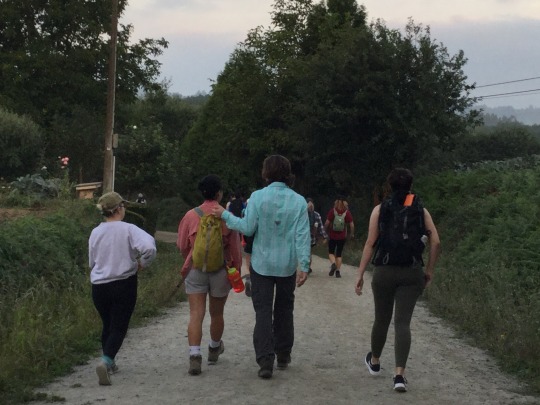
The Camino holds a different meaning for everyone that walks it. My classmates and I sought out to explore both what significance it holds for us, as well what it means to others walking. The walk is very much a no-frills experience: basic hostels, limited access to technology, and fitting all your belongings into a single backpack. Nevertheless, the lack of luxury is precisely the reason many people are drawn to the journey. The Camino exemplifies how instrumental forfeiting material concerns can be in creating an authentic space for internal reflection and meaningful interaction with others.
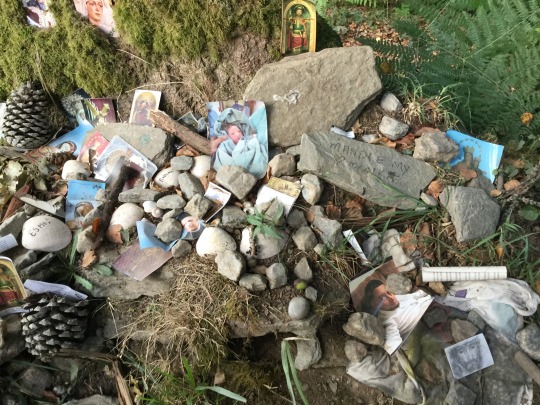
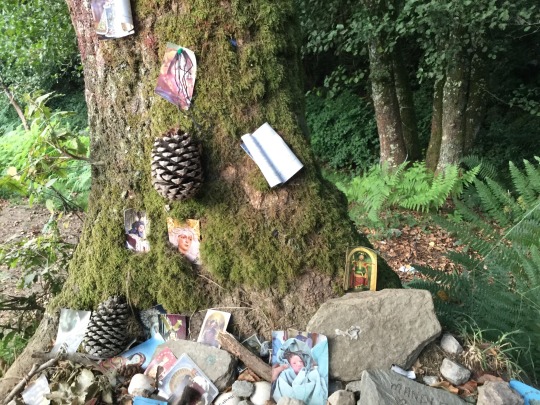
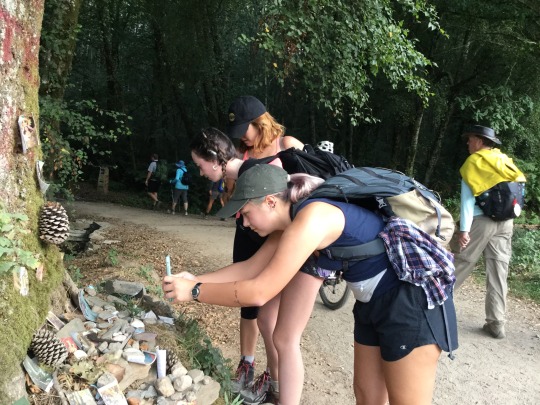
Just as each morning’s crisp air and morning dew eventually faded as the day went on, my discomfort and often trivial concerns dissipated as the days of walking progress. I instead became absorbed by the scenes of small brightly colored homes, farm animals, beautiful flora, and messages of encouragement scribbled everywhere. One message read, “viajar abre la mente”, which translates to travel opens the mind. While quite simple, I think this message truly embodies the Camino’s spirit of mental growth. The walk’s long dirt trails guided me through lush farmland and rich forests, but more importantly to an untapped mental space of reflection and gratitude. The journey gave me both the time and space to reflect on the past couple of months of travel throughout Europe and appreciate how fortunate I am to immerse myself in global experiences as meaningful as walking the Camino.

The Camino held a special meaning for each and every member of the LIU Global Class of 2021. Classmate Lilli Hoffman also found the experience to be a meaningful space for reflection. She says, “It was a time that I could spend a few days in nature quietly reflecting on the year previous and the year ahead. It made me feel like I was part of something a lot bigger than me, something that millions of people had walked before me. Just walking brought me a lot of clarity and made me want to go back and do a larger portion Camino in the future by myself.”
For Skylar Silvera, the Camino’s spirit of community was most meaningful: “Meeting people from all over the world, learning about different beliefs and hearing stories about loved one’s travelers dedicated their pilgrimage to, was such a beautiful experience that I know all of us to cherish deeply. Now I get to look back on these miles and think of the many before me that yearned to journey outside their tiny villages to seek a greater unknown, and feel lucky that I get to do that every day with the best people.”
While the Camino meant something unique to each of my classmates, I’m sure the experience will never fade from each and every one of our memories. In fact, many of us hope to return one day and challenge ourselves with a longer route. Before attending LIU Global, the Camino was something I had always heard about but never thought I would ever realistically have the opportunity to do. Needless to say, the Camino was such a meaningful addition to the Spain program this year and surely will continue to be in the years that follow.

Studying in the city of Renassaince.
by Nora Gibbons.
After semesters in Costa Rica and Spain, theLIU Globalclass of 2020 all have
experience in the art of essay writing and crafting a written argument. But how many of us have had the chance to express our ideas in a visual or fine art form, through video or printmaking or drawing or photography? These are the opportunities we have had over the last couple of months at the Florence School of Fine Arts. Now, not only do we have the skills to write a research paper on our favorite global issue, we also have experience creating documentary videos about climate change or using augmented reality technology to comment on the visibility of women in a variety of realms.
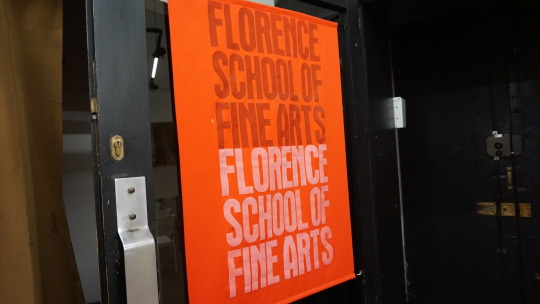
Located in the Santa Croce neighborhood in central Florence, the Florence School of Fine Arts, according to cofounder Melania Lanzini, “is an innovative arts program bringing forth new ideas and different approaches to teaching.” The school itself is actually located in the former home of Giorgio Vasari, a notable writer, architect, and artist in the Renaissance. And this is not the only brush with history that we get to experience throughout our days in Florence.

Some of us wake up to a view of frescos on our bedroom ceilings in our apartments or walk past Brunelleschi’s famous Duomo on our way to school. We spend each Friday morning some of the most renowned museums and historical sites in Florence, learning about Renaissance art from our professor Frederica, a talented art historian.
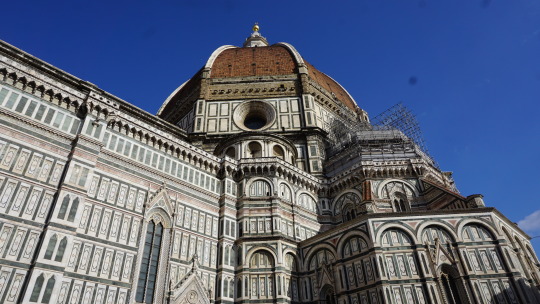
In addition to the Renaissance art class, the Florence School offers us courses in Italian language, interactive design, filmmaking, and world cinema. For those of us Global students able to take an overloaded schedule there are also opportunities for drawing, photography, printmaking, letterpress, and bookbinding classes.
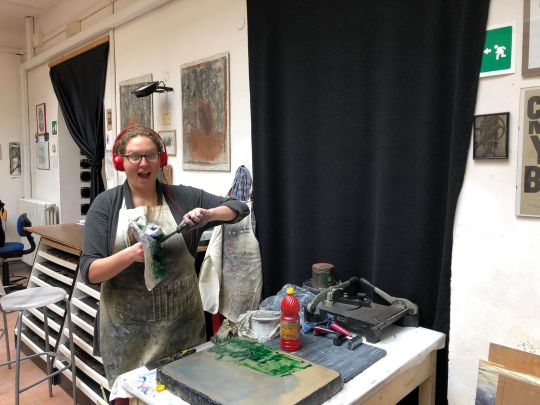
For many of us, our only wish is that we could have taken advantage of more of the courses offered at the Florence School.
Since we are each taking different electives based on our interests, each of our days looks different. Some of us may head to the studio early to work on interactive design projects, using technology on smartphones to turn photos, drawings, and paintings into an interactive sight and sound experience or to work on hand binding books of our artworks. Others may have a slower
morning in our apartments drinking a cappuccino and preparing for a world cinema presentation later in the day.

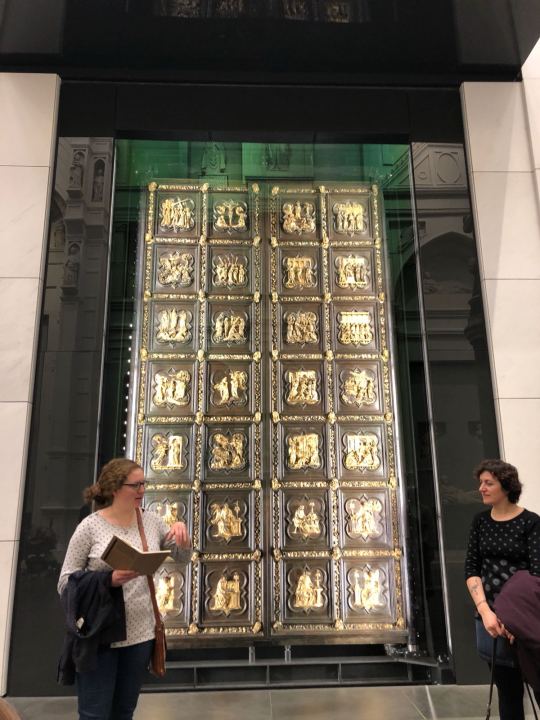
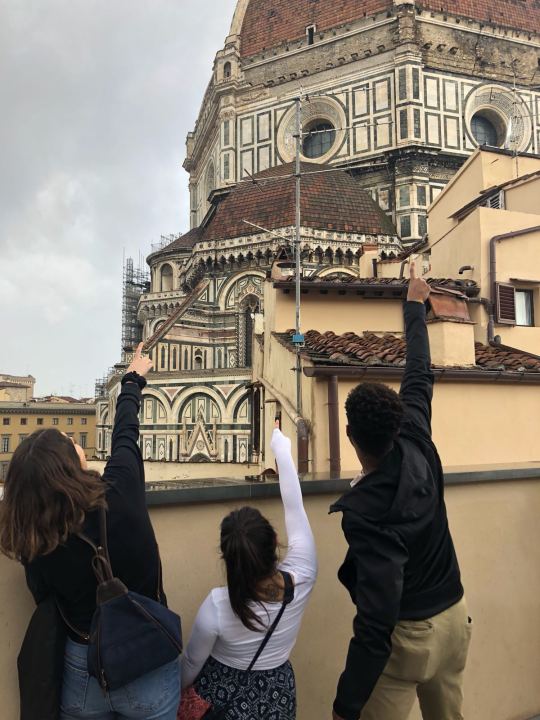
The main constant throughout our diverse days though is the opportunity to express ourselves creatively, surrounded by a city filled with inspiration.
For many of us though, the best part of this experience is the people.
We have been so grateful for the support of theFlorence Schoolfounders, Charles Loverme and Melania Lanzini, and all the staff of the Florence School. From advice and guidance on our creative projects to fixing a
leaking washing machine late at night, we can always count on them to support us and advocate for us and cannot thank them enough.
Post link
Culture and Ecology of the Fijian Islands
by Miranda Hope Shea
We touched down in Fiji amongst a riot of colors— rich greens and yellows splashed with pink and red blossoms. The air was heavy with rain, a light mist catching our hair and clothes as we stepped off the plane and walked down the tarmac to congregate by the luggage carousel. The people before me hugged and laughed, hoisting massive backpacks over their shoulders with eager determination. I smiled nervously. Being a transfer student is a strange mixture of nervousness and excitement. A new country with new courses and new faces: a challenge I was ready to take on. I lugged my own bag, packed with essential hiking and trekking gear, and clothes suited to the hot climates we would be travelling to, over to the group to be greeted with hearty welcomes and enthusiastic chatter about the adventures to come.
A band of excited students, we piled into vans that whisked us off to our apartments in Suva, the countries’ capital. Over the next week we would get to know each other, our professor, and our student coordinator while beginning our introduction to courses like Political Economy and Ecology, International Development, and the overreaching course of Global Studies III. We would take our first Innovative Encounters with Nature and Knowledge trip to Sigatoka; a town on the southern coast of the main island of Viti Levu, where we explored the ancient burial grounds of the Lupita people, jumped off massive sand dunes, and learned about the intersection of human and nature while planting trees for forest regrowth. In Suva we visited the Fiji Museum and began asking ourselves questions about colonization, and the process of its deconstruction. This would remain a theme throughout the semester, as we delved deeper into the subject, working on creating an understanding of the roles we played as tourists, as Global Studies Students, and as Westerners. We also were able to collaborate with Masters students studying at the University of the South Pacific, discussing climate change and it’s drastic effects on the nations of the region. This experience raised our sense of urgency, making us ask ourselves how we can each make an effort to combat global warming.
Namosi: an eco-resort tucked away in the lush highlands of the island. The way we got there? On the back of a truck, packed in like sardines, jolting over the gravelly and narrow mountain roads. “Bet you never thought this would be your classroom, huh?” my professor asked, computer perched precariously on his lap, typing away furiously mid-bus ride. I shook my head, laughing as he clung to the keyboard for dear life. We arrived in Namosi, a bit hot and dusty, only to ford a river with bags over our heads, to arrive at our destination. All in one piece, the weekend commenced with a bonfire, a kava ceremony, and a brilliant sky crowded with stars. Respecting local tradition was important for our group. One of our key learning goals was to immerse ourselves in a culture, learning from, rather than about. This meant adhering to local custom such as the wearing of sulus: a length of cloth wrapped about the waist (worn by both men and women) as we passed through villages on our way to a remote waterfall. We trekked through the mud, up steep inclines, and through low hanging palm fronds to emerge at the top of an icy cascade—a welcome relief at the end of the sweltering jungle. This would be one of many waterfalls we would see, a running joke amongst us students: “we might as well call this waterfall school!” But ultimately, it would be experiences like this that would cultivate a deep appreciation for the ecology of the South Pacific, and the struggles it faces.
We would learn further about this during our homestay within the community of Waitabu, on the Island of Tavuni where we would scale more waterfalls, hike in the warm rain along the beach, and make lasting connections with the locals. Our trip to the third largest Fijian island was a twenty-hour ferry ride, after which we gratefully clambered off the boat onto the aptly named “Garden Island”. We arrived at the community near dusk, the sky turning apricot and gold over the ocean before us. The people there welcomed us with open arms, every single one of us feeling at home immediately. The village is one that has had a massive impact on the way Marine Protected Areas are incorporated, using traditional concepts to deem “qoliqoli” (fishing areas) to be “tabu” (no-take zones). For ten years now the village has been an example of how the nexus of local laws and traditions and modern science can be incorporated to create environmentally sustainable areas. We were able to snorkel and dive here, and in the breathtaking Rainbow Reef where the explosion of life and color was unlike anything I had ever seen before. The aqua water, the salt on our skin, resting in the shade of coconut trees eating soursop and pineapple surrounded by flowers—it was an awe-inspiring experience. Yet the beauty of the people and their land is threatened by the encroaching threat of rising sea levels and natural disasters. What we were able to experience might not last for generations to come if greater action isn’t taken, on an international scale. Fiji opened our minds to the realities of these issues, while also finding a place in our hearts for years to come.
Post link
Freshman Year
by Sara Crouch
The first semester of LIU Global can be defined in one word, “adjustment”.
Like all new college students, we had to adjust to being in college, separated from our families, and being fully responsible for ourselves for the first time.
We have had to learn to balance a load of three-hour classes during the week and our personal time. While other college Freshmen go through similar adjustments, we have the added factor of adapting to a new country at the same time - a Spanish speaking country.
We were thousands of miles from home adjusting to our unique experiential college environment together. We learned how to balance our coursework and our fun time in creative ways, doing homework on planes, trains, buses and at weekend hostel stays. We figured out how to learn in the classroom, in the field and in our daily lives. We adapted to constant rice and beans, to throwing our toilet paper in the trash can and overall a brand new reality. We faced a new climate, a new social dynamic, a new diet, and a new culture while adjusting to a new peer group. We found our place within that group through class debates, field trips to other places, weekend adventures and everyday conversations. We discovered how to be together all the time - how to use our small class size as an opportunity to bond deeper with one another.
We adjusted to a new way of life, a new program, a new group, a new culture and a new sense of ourselves. These were large, seemingly overwhelming adjustments, but each of us accomplished them by relying on each other, the program and our own merits. And now that we’ve all adjusted, we are ready to tackle a new semester and new adventures.
Post link
The Community Engagement Experience
by Sara Crouch
Each year during their first semester, the freshman class ofLIU Globalembarks on a week-long community engagement project with different organizations all across Costa Rica. Students are given a selection of projects to choose from and they are matched with their top picks. This year there were seven different community engagement projects that student groups participated in including: observing and teaching with Centro Espiral Mana, an English school; studying natural medicine with the New Dawn Center, a tropical medicinal herb farm; working on a family run biodynamic farm; living and working with the Boruca community, a rural indigenous community in the mountains; picking coffee and participating in other community activities with ASOMOBI, a women’s coffee cooperative; working with animals at the Costa Rica Animal Rescue Center; and volunteering with the Sea Turtle Conservation Project to monitor local sea turtle nests, the center’s hatchery and turtle releases. These projects were located all across the country, from the mountains of Talamanca to Montezuma Beach, with students traveling and participating in small groups.
For my community engagement project, I went toCentro Espiral Mana, an English learning school in El INVU, a rural town in the province of Alajuela, Costa Rica. Centro Espiral Mana (CEM) offers English teaching certification courses for potential teachers from all around the world, English teacher training certification courses, Saturday youth English classes, English workshops for visiting groups, and free community English classes Monday through Thursday night taught by current student teachers or volunteers. Centro Espiral Mana is a program focused on interactive education and the promotion of creativity and transformative learning in the classroom. The school encourages teachers to use a wide variety of activities and simulated situations, giving students a well-rounded and fun English education experience. The most important principle of the CEM approach to education is the idea that the cultivation of community and relationship in the classroom must occur before learning can happen. This principle is ingrained into student teachers during their teacher training and is evident in their class activities as well as the general atmosphere of Centro Espiral Mana and its relationship with the El INVU community.
During our engagement with Centro Espiral Mana, we lived with host families in rural El INVU and participated in a variety of activities and learning exercises in the community and Centro Espiral Mana. Each night we would participate and observe the community English classes so as to see the educational approach of Centro Espiral Mana and its impact on students. During our days in El INVU we participated in a host of other activities. On our very first day, we solely participated in the night English class after traveling to El INVU earlier in the day. The second day, we participated in an English workshop at the center with Costa Ricans from a local technical college and visited an English class at a local elementary school, Educativo Carmen Lidia Castro Rodriguez, where we led activities and learning exercises for the kids alongside their English teacher. On the third day, another student and I interviewed five of the 18 Nicaraguan English teachers studying at CEM about their opinions on the relationship of language and culture for our Global Studies research paper. Later in the day, we participated in a chocolate workshop the center planned for us led by one of the very first graduates of Centro Espiral Mana’s English classes, Ishmael. On the fourth day, we visited a preschool in La Fortuna called Cataplinkis where several of the teacher trainers from CEM work during the day. We observed a class of students with a focus on the educational and conflict resolution techniques used by Maggie, the teacher. On the fifth day, we participated in a Stress Reduction workshop with a local woman, Kinga, and observed a teacher training workshop on “Responding to Inaccuracies.” On the last day, we interviewed Mary Scholl, the founder of Centro Espiral Mana, and observed CEM’s Saturday youth English class. For the first four nights of the project, we also participated and observed the community English classes that took place at Centro Espiral Mana from six to nine.
As I mentioned before, another student and I were actually able to relate our experience with Centro Espiral Mana to our upcoming final research paper for our class “Foundations of Global Studies.” For this paper, pairs of students chose a topic related to culture or environment to research and present their findings on. My partner and I chose to research the relationship between language and culture, specifically the impact of English on Spanish-speaking culture. We interviewed five Nicaraguan English teachers about their thoughts on the influence of language on culture and vice versa. Our initial concern coming into our research and these interviews were that teaching English was a new form of neo-imperialism in Nicaragua and other Spanish speaking countries, thus impacting the culture of these countries. We found that this was not the case. The teachers we spoke to said that English is solely a skill for the workforce, left behind when they walk into their homes where Spanish is the familial language. They did not believe English impacted their culture but rather is a helpful skill for many Nicaraguans in the workforce. To them, learning English is an economic investment for Nicaraguans, but not a necessity. The only mildly critical response we received about the impact of English pertained to how many of the well-paying jobs in Nicaragua are with the United States or foreign companies. This teacher said that he wished more Nicaraguans made up the CEOs or management of large businesses in Nicaragua, negating the need for English. This being said, he agreed that at the moment knowing English offers Nicaraguans more opportunity for higher paying jobs. I still have my concerns about the dominance of Netflix and American media in other countries, but I do feel better about the idea of teaching English after discussing it with people who are actually affected by the push for English education. They are not concerned that English is damaging their cultural identity, so neither am I.
Community engagement projects are a key learning tool in LIU Global curriculum. They force students out of their comfort zone and out of the classroom. It is a way for us as students to have real-world experience with the subjects we’re interested in, see local solutions to global issues, and be exposed to new fields of study. In my case, my partner and I were able to relate this community engagement project for one class with an assignment from another, illustrating how linked the different parts of the LIU curriculum are. My project with Centro Espiral Mana also allowed me to learn skills and principles that I would never be able to learn in a classroom and gave me invaluable experience working in the field of international education. Through this experience, I was also able to build my intercultural awareness as I interacted with teachers from all over the Americas as well as a rural Costa Rican community. Centro Espiral Mana served as a beautiful example of global camaraderie and intercultural awareness with the intention of working towards a shared goal - effective language education around the world. Additionally, this experience resulted in my discoveries of new interests, goals and social issues and the creative solutions to them. My time with Centro Espiral Mana allowed me to realize a new passion for adult education as well as language education. I had never worked with either of these forms of education, adult or language, but found that they are truly inspiring and can be a lot of fun. It reminded me of the joy that learning a new language can be and has motivated me to consider teaching English internationally to both children and adults. It also inspired me to study more on educational approaches and pedagogies as well as education policy internationally. What are the approaches to language learning used most commonly in the world? Are all public education systems set up like the US - with traditional classes? What is the current international education policy, if there is such a thing? These are the questions I’ve been inspired to find answers to after participating in my first community engagement project with LIU Global.
This was the first of two independent engagement projects that students participate in their freshman year. Next semester, we will embark on another such project but for two weeks rather than one. This next project will be a research engagement in which students research a specific question of their choice in the community or organization they visit.
Post link
3 tips for your Senior Internship Abroad
by Erin Taylor
This semester I had the privilege to intern at a fantastic environmental and human rights organization with an office in Chiang Mai, Thailand.
Being an intern is very strange, this is important. You’re in a strange space where you’re not really an employee but you’re also not not an employee. There was a point in my internship where I went in every day, which is more intensive than most IRIS internships require but it’s all about being a part of the process and the office.
I have a few hot tips on how to make your time at your internship a fun, worthwhile experience and hopefully a little less awkward.
●Communication is key. ○ This one seems obvious but it’s actually surprising how easy it is to not communicate or leave out a really important topic that must be communicated. When working in any workplace, it’s really necessary to communicate expectations, schedules, and abilities. If you feel you’re not familiar with how to do something, communicate it and express a willingness to learn. I feel often times because of the strangeness of being in an intern position and trying to find your “place”, it’s easy to agree to do things that you’re not even really sure how to do. The brilliant aspect of an internship though is that you’re able to learn and it gives you the space to explore new abilities and capabilities. You could surprise yourself, but first, you must communicate so that you don’t end up three weeks past agreeing to do something and it’s due tomorrow with no idea on how to do it. This will just lead to complications and possible disappointment for everyone involved. Having conversations while being an intern may be hard sometimes, but they want you to do well and take something from this experience. Communicate with them so you can get the most out of it.
● Get involved. ○ This may seem obvious, but it’s really easy to go to a workplace and not become a “part” of the workplace. Being a part of an office environment isn’t just about showing up to work but about getting to know your co-workers as people. Especially in an intern position, it is easy to feel like you’re an outsider and to some extent, at least initially, you are. However, it doesn’t have to be this way. Take up co-workers on offers to get lunch, start up conversations with them, hear about who they are as people. You’ll be much more memorable as an intern if you allow people to get to know you as a real person and reach past the strange layers of professionalism that comes with the title “intern”.
● Make yourself indispensable. ○ Every workplace is different but it’s very easy for a lot of interns to kind of just be given busy work or even in some cases, just be there as a body to take up space. You need to make yourself valuable to your organization, you were given this internship for a reason! You have important skills, though, and most importantly, your time to offer. Don’t allow your time to go by without making an impact on your organization, however small. Being an intern can be awkward, strange, and confusing sometimes. But if you allow yourself to go into it with an open mind, availability, and really show them you’re in it, your experience will go wonderfully. Just be willing to communicate, be a part of the office culture, and actually put in the proper work to make yourself a shoe-in for a recommendation in the future.
Post link
Limón
by Sara Crouch
One of the main elements of LIU Global that sets it apart from other universities is the opportunity for students to travel and interact with the cultures and educational principles they’re learning about. As students, we are able to visit the very places we are studying - to go into the actual environment of our subjects, whether it be a city, a jungle, a farm, a university or a village. We go where the issues are - where the solutions are being made - and learn from our experiences while there. This is the experiential learning aspect of LIU Global that makes it completely separate from other universities in the world.
Recently, the Class of 2021 underwent our very first experiential learning excursion to the province of Limon. While in Limon, all of our activities were focused on learning about the history, culture, and environment of Limon. Though we had a few interesting lectures from guest speakers about the topics of Creole language, women’s roles, environmental policy, the culture of Limón and local park maintenance, the majority of our time was spent out in Limón, learning about this province by experiencing it. Instead of reading about the Port of Limón, the most important in the nation of Costa Rica, in a textbook, we took a tour of the city and learned its history. To learn the perspective of local people of Limón, we talked to a local Limonese, including a local Puerto Viejo restaurant owner who happened to be a former Congressman from Costa Rica.
In fact, Edwin Patterson, the local restaurant owner, left quite an impression on many students. As For example, Nina Khorey, a freshman of the Class of 2021 from Pennsylvania, says, “my favorite speaker was the restaurant owner because I didn’t feel like it was a lecture - it just felt like him giving us some pretty cool advice about life…And I think also that’s what the value of going with an organized program is - that they can introduce you to people like him, the local restaurant owner, that you wouldn’t have maybe known about on your own.” Patterson isn’t the only contact of LIU Global that we wouldn’t have known about – Finca Tierra, an agro-ecological farm near Puerto Viejo, is another example of the advantage of studying with Global. We went to this farm, which was not a small feat as we had to walk up a very large hill in the mud of the rainy jungle, and heard the story of its creation and current projects from its owners.
Our class learned about the environment of Limón and its white sand beach of Cahuita by going to Cahuita National Park and listening to a local park ranger there. We learned about the diversity of animal life in Costa Rica by going to the local Jaguar Research Center and hearing from its experts. Our discussion of indigenous issues in Limon and Costa Rica, in general, took place within the Kelondi Indigenous Reserve in which we listened to the stories of this groups’ leaders and toured their iguana reintroduction and repopulation program. Perhaps you notice a theme within these activities – with LIU Global experiential learning, we learn by going to the environments of our subjects and learn from our experiences there. With Global, it’s about going to the root of a topic to study it.
For our Class of 2021, the Limon trip was crucial to our study of Limonese culture and environment. As Alona Anerson, a freshman from Portland, Oregon, says, “the Limon trip was a great manifestation of experiential learning and that this really pushed our knowledge further than in relation to the classroom. My favorite example of this is when we actively went into the indigenous community and just listened to them talk about how they live.” Experiential learning trips with Global are not only about lectures and tours, however, but also interaction. One of the favorite activities of our Limon trip was the opportunity to work with Rhythm Nation and learn Calypso, African, and Dance Hall dance. This dance class, in the words of Kendall Shanks, a current freshman class representative, “provided a nice break from the lectures, and learning the history and cultural significance of the music and dance made the experience that much more interesting.” These types of performances and interactions with the surrounding culture are a fundamental part of these experiential trips.
Not everything about these trips is serious, however. During our time in Limon, we also created many stories and a lot of laughter. One of my favorite memories from this trip was when we were touring the beautiful Cahuita National Park and we saw the cutest trio of raccoons and their mother. As the mother was scavenging for food for her babies across our trail, Marcello, the Global Studies professor of our Environmental portion of the class, stuck out his fingers to her. Mama Raccoon didn’t really like this and actually ended up almost biting Marcello’s fingers off, resulting in a fabulous photo of a very angry mommy raccoon. Raccoons were not the only critters we saw in Limon though. In fact, before we even reached the Port of Limon, we spotted two sloths in the trees next to the road. We then pulled off to the side of the road to gawk and take pictures of these sloths. The awed and joyous photos of students were hilarious as they saw these sloths as meanwhile other Costa Ricans drove by us, shaking their head at the crazy Americans. I do have to say though that my best memory from Limon was the end of the Rhythm Nation dance workshops. Once all of our dancing was done, each of the dancers from this organization came around and hugged each and every one of us students. This moment is one that will stay in my heart forever because it showed the bond we created with Rhythm Nation during our dance class, as well as our bond with Limon. It was a beautiful moment that I do believe will stay in our memories forever. Another lasting memory will be our experience with Hurricane Nate which, during our stay in Limon, hit all of Costa Rica except Limon. As we watched the rest of the country experience flash floods and alligators in the streets, we saw no rain and had to stay an extra night in Limon due to far away from closed highways.
Each student had a very unique experience while in Limon, with individual experiences and memories. Kendall Shanks felt that “the Limon trip was truly one of the most incredible, experiential activities I’ve ever done. Hearing how the same issues of land rights, environmental protection, and sustainability were handled from multiple levels and perspectives was an integral part of the learning experience…I learned about topics I never would have been introduced to otherwise: sustainable permaculture, iguana farming, and development of Creole languages.” Hannah Weinz, another member of the Class of 2021, says that she “really enjoyed the field trip to Limon because I felt it was educational both in and outside of the classroom. I learned about the unique perspective of the Afro-Limonese descendants in the rest of Costa Rica and the Costa Rican government. I also learned about everything that was taken away from the indigenous people of Limon and how they chose to contribute to the land by reintroducing the iguana population. I felt bad about all the injustices the indigenous and Afro-descendants had to face but found it inspiring how they persevered.” Another anonymous student says that she “had an amazing time in Limon. I thought that everywhere we went was so beautiful, so colorful, and had such a Caribbean feel. It was really great to read about the history of Limon and the UFC and then actually see the buildings and places that held those events. I learned a lot about the history of Limon, the present issues of Limon, and the stigma that the rest of Costa Rica has of Limon.”
Personally, I felt that the Limon trip reaffirmed my belief in this program as the right place for me. The ability to actually interact with the material I was learning about in the classroom, about the United Fruit Company and Limonese culture and environmental systems, by going to their original places broadened my understanding of these topics and better connected me to their real-world value. The activities that impacted me the most were those that involved interaction with local peoples and thus connected me further to the environment. These experiences included the Kelondi indigenous community, our dance class with Rhythm Nation, our visits to Cahuita National Park and Finca Tierra.
As you can see, different experiences stuck with each student, but each one of us felt that our trip to Limon advanced our learning and was an amazing opportunity. I predict that this will continue to be our outlook on all of our experiential trips with LIU Global. Experience and interaction will continue to advance our studies and cultural understanding - which is the very purpose of the experiential learning aspect of LIU Global’s curriculum.
Post link
What do you picture when you think of China?
For many people around the world, the first images that come to mind are often of hyper-developed urban landscapes—skylines built from glass and steel, streets clogged with people, and a gauzy veil of smog draped across it all. And while this may be a fair description of some large Chinese cities on particularly polluted days, there’s another face of this country that remains largely invisible.
For our first class trip of the semester, students from the LIU Global China Center left behind the city of Hangzhou to spend a weekend in the countryside of Anji County. It was an opportunity to learn about the culture and sustainability of China’s rural areas. While traveling by bus out of the city and into the mountains, I was struck by the beauty of the landscape. We were surrounded by dense, green forests that stretched out across the rolling hills and mountains, and the mist formed naturally in the rainy climate (in contrast to the smoggy skies over Hangzhou).
It was a busy couple of days—we visited several local communities with our guide, and she introduced us to a different side of China. It was clear that the people we met in Anji were excited we had come to learn about their home and eager to share their culture and environmental work with us. I felt this way especially when we went a bit further out into the countryside to see some of the environmental initiatives being implemented in small towns (such as water treatment and waste disposal systems). We were also fortunate enough to be invited to the homes of local families. I and a group of other students had the chance to speak with Mr. Chang, a retired local politician. He talked to us about his role in the government and community and the significant changes he’s seen in the area over the course o
This theme of gradual changes in rural areas was a recurring theme throughout the weekend. The people we met in Anji value their traditions and culture, and appreciate the peaceful beauty of their natural environment. However, they are also aware of the uncertain future of rural communities. Village populations continue to shrink as younger generations move to cities in search of better jobs and education. As we visited a number of “green” buildings, environmental projects, and other local organizations, we gained a deeper understanding of China’s “beautiful countryside” initiative. With a combined focus on “planet, people, and profit”, this governmental project has played a major role in Anji’s efforts to protect its natural environment and way of life. One student, Alejandra Molina, found the government involvement in these local projects impressive, explaining that “it was a very enriching experience, seeing the efforts that the government has made to preserve the countryside even in this age of urbanization.” They’ve certainly made quite a lot of progress, but as the people, we spoke with emphasized, there are still no guarantees as to the sustainability of this movement. Erin Young was also interested in learning about the complex issues at play here. “Our discussion with our guide really opened my eyes to the local problems occurring in the Chinese countryside,” she said. “I think seeing it firsthand, the tourism they are attempting to create proves how difficult it is going to be for them.”
Environmental sustainability—as well as its intersections with cultural traditions and ecotourism—is a subject that my classmates and I have had the chance to study in depth in a variety of locations over the last few years. It’s always interesting to see how these processes and conditions differ between countries. One student, Karla Dana, appreciated the opportunity to explore the connections between Anji’s problems and the larger global issues we’ve been studying in our classes. “What impacted me the most about this trip was the interplay of global and local dynamics,” she said. “I learned how the recession in the mid-2000s affected bamboo farmers in Anji, which in turn led them to plant tea instead of bamboo, and that ended up having negative repercussions on the land in local villages. It’s always interesting to gain a local perspective on global issues!”
Overall, our trip to Anji was an engaging experience. I’ve always had an interest in environmental issues—and our readings and lectures had provided important background knowledge of China’s environmental protection initiatives—but this weekend helped to fill in my understanding with so much more nuance and complexity. Trips like these always leave me feeling so grateful to be a Global student and to have the opportunity to witness the local applications of more abstract global issues.
Anji,
by Emma Manos
Post link
This summer saw a great deal of discussion around climate change. We asked NYU experts about what it means to the world and our University.


